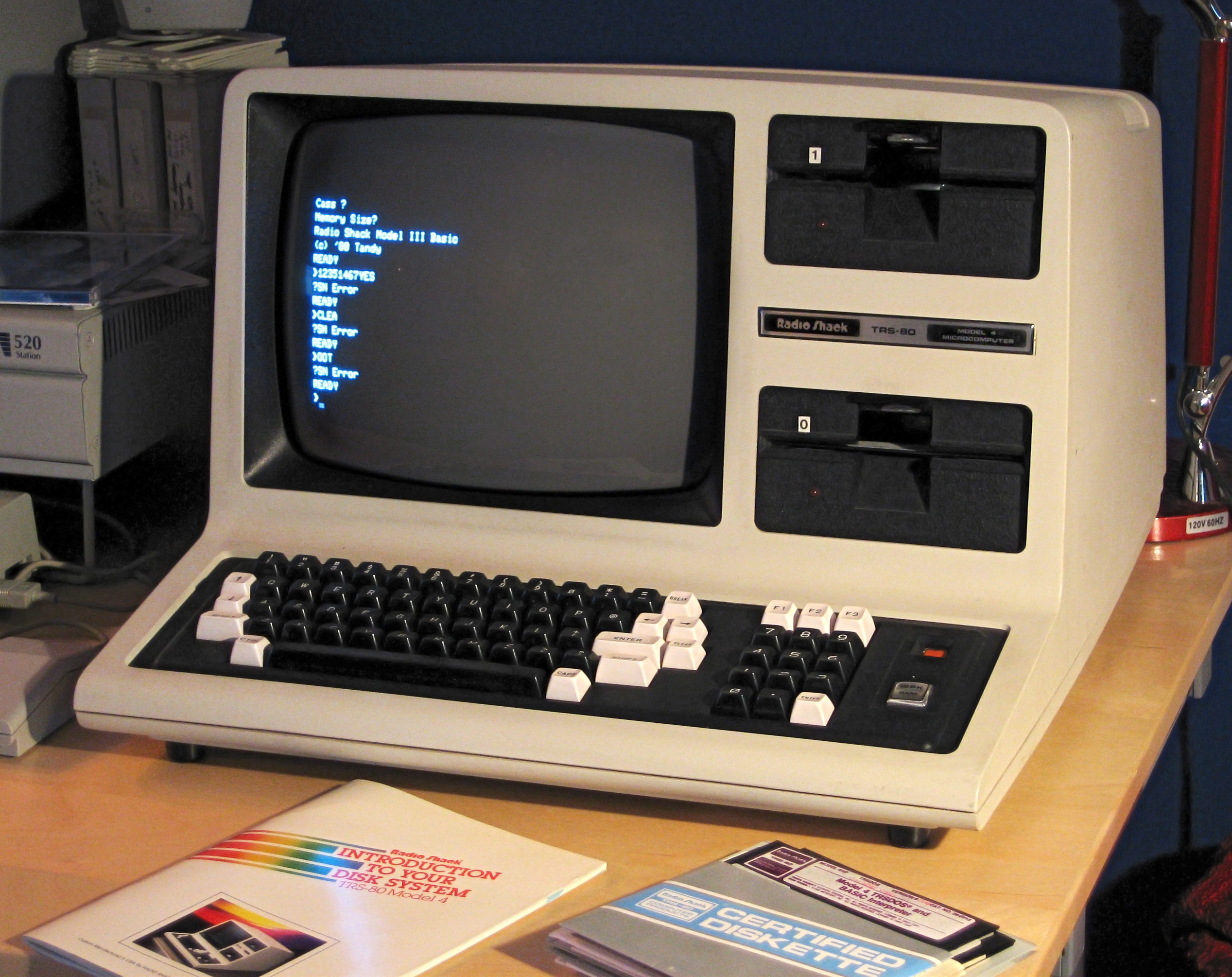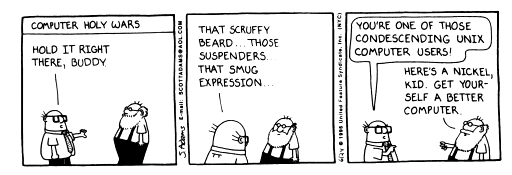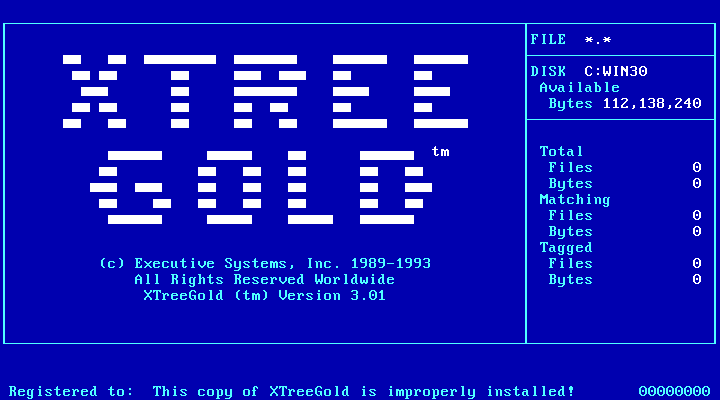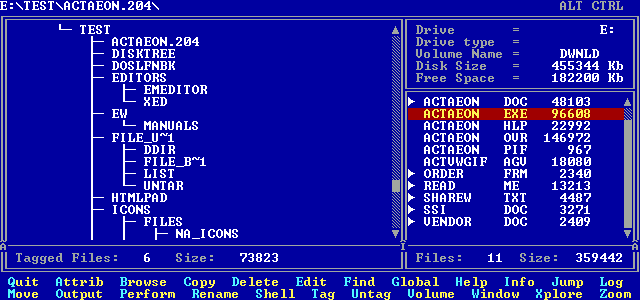I had one of those, plus a Timex 1000, and a "Trash 80". :-)

Posted on 08/17/2016 10:29:43 AM PDT by zeugma
I was poking around some old data today from some old backups, and I ran across something the old time computer folks will recognize and thought I'd share.
Many, many moons ago, before the internet was much more than a few government systems set up to 'talk' to each other, we still had PCs and stuff, believe it or not. Granted, compared to the system you can buy for a few hundred dollars today from just about anywhere on the internet, they weren't much, but they were what we had.
There were also things called "magazines" printed on thinly sliced dead trees. These covered just about any topic you could imagine, so of course, there were some dedicated to computers.
In some of these periodicals, you'd sometimes have little programs printed that you could, if you were careful and didn't make any mistakes, enter into an editor on your computer, save, compile and execute. Some were so tiny that if you were using a computer that used the DOS operating system, you could enter into a program called "debug", and almost immediately execute them. Debug was a really powerful and dangerous program, because it would give those who invoked it direct access to just about any scrap of memory or disk on your computer. Used injudiciously, you could easily trash your hard disk, or worse.
Because DOS didn't really have much intelligence to it, it was difficult to write interactive scripts. So, over time I put together a collection of tiny utilities to make my batch files smarter. One such program would read what key you entered, and output the scan code of the key as an error code. So, you could have your batch file prompt for input, then take different actions depending upon what the user entered.
here's the code for "key.com".
N KEY.COM E 0100 B4 00 CD 16 EB 0E 77 06 3C 60 76 02 E 010C 24 DF 3C 00 75 02 88 E0 B4 4C CD 21 RCX 0018 W Q
If you entered the above into a plain text file, and saved it as KEY.SCR, then enter the following from a DOS prompt:
DEBUG < KEY.SCR
you would end up with a program called KEY.COM that would interpret and echo keystrokes to help your batch files a little smarter than they otherwise would be.
The program, KEY.COM is tiny, weighing in at a whopping 24 bytes. However, it's diminutive size did not adversely affect it's utility. An even smaller pair of programs were something I called "WARM.COM" and "COLD.COM". They would reboot your PC immediately. 'Warm.com' was the equivalent of pressing the [ctrl]-[alt]-[delete] key, which would reboot without performing a full POST (Power On Self-Test). 'Cold.com', on the other hand, was like powering your computer off and back on.
If you were to run the following through DEBUG as shown above, you'd create both programs.
N WARM.COM E 0100 B8 40 00 8E C0 26 C7 06 E 0108 72 00 34 12 EA 00 00 FF E 0110 FF RCX 0011 W N COLD.COM E 0100 B8 40 00 8E C0 26 C7 06 E 0108 72 00 00 00 EA 00 00 FF E 0110 FF RCX 0011 W Q
It is easy to spot the difference between the two programs. The bottom line, was that the program told your computer to jump to a certain memory location. The different locations controlled the different boot types.
One final debug script I'd like to mention is 'BEEP.COM'. It wasn't the most powerful program in the world, as it had one simple job to do. It would make your computer speaker beep once. That's it. What is cool about it (to me any way) was that the entire executable was a whopping 6 bytes! To this day, I've never seen a smaller functional program. Here it is, in all it's awesome and tiny glory:
N BEEP.COM E 0100 B8 07 0E CD 10 C3 RCX 0006 W Q
The dates associated with the files indicates how long ago I was talking about...
-rw-r--r-- 1 zeugma zeugma 6 Jan 28 1994 BEEP.COM -rw-r--r-- 1 zeugma zeugma 56 Mar 11 1995 BEEP.SCR -rw-r--r-- 1 zeugma zeugma 17 Dec 22 1991 COLD.COM -rw-r--r-- 1 zeugma zeugma 94 Feb 13 1996 COLD.SCR -rw-r--r-- 1 zeugma zeugma 24 Dec 6 1992 KEY.COM -rw-r--r-- 1 zeugma zeugma 17 Dec 22 1991 WARM.COM -rw-r--r-- 1 zeugma zeugma 94 Feb 13 1996 WARM.SCR
Not to me. I measure intermodulation, albeit at very very much higher frequencies! When you 'mix' two frequencies, audio, HF, RF or microwave, or even light, you get the two originals plus their 'sum' and their 'difference'....................
05/13/1998 11:23a 254 BEEP.COM 03/11/1995 10:30p 56 BEEP.SCR 12/22/1991 01:56p 17 COLD.COM 02/13/1996 05:53p 94 COLD.SCR 12/06/1992 08:25p 24 KEY.COM 12/22/1991 01:56p 17 WARM.COM 02/13/1996 05:54p 94 WARM.SCR
You have piqued my interests. About a month ago I was looking at ring core memory on Ebay with a mind to get one and make it work.
Those rings are not ordinary ferrite. They are a special type of ferrite that has very strong hysteresis characteristics.
But what I am wondering is why you might be interested in making magnetic core memories work?
An earlier Freeper had it right. A read wire and a re-write wire and one to blank it. Once you read it, you had to rewrite to it to keep the state.
Yes it was!.................
I had one of those, plus a Timex 1000, and a "Trash 80". :-)

I cannot tell you why, actually. The only thing I can say is wondering about what is contained in the technology of equipment from days of yesteryear. Sorry.

I was too, but it was mostly assembly. (And a little bit of basic on the new TRS-80.)
That’s the way of most if not all ‘industry’ type magazines.....................
Only because we couldn't afford a PDP11 as our home PC. I was actually working with HP-3000 minicomputers back then. I worked mainframes and minis years before I even saw a PC. I wanted to bring a HP3000/70 home. The heat it put off would be great during winter. Not so good during the summer.

Most certainly but the most fascinating fact is that the human ear is a wonderful mixer and it automatically selects, emphasizes, etc. the lowest frequency product.
Fascinating in my book.
When I learned this I said “bullshit”....I actually took two oscillators and speakers at the frequencies mentioned and I padded them into a summing pad. The dial tone appeared and I was a believer.
yeah. We had the TRS-80 Model I with 16K of memory and a cassette drive.

 I used X-Tree!.............
I used X-Tree!.............
It’s mathematics!..............
Hey!

Well, in my defense, I was talking specifically about some stuff I'd found when trying to find some old BBS stuff from my archives. (I'm actually looking for the original Clinton Body Count file) I don't have many archives from the various minis and mainframes I worked back in day. Not that I can still read anyway.
Understood but it is a wonderful byproduct that he human ear suppresses the two higher tones and selects the lowest product, n’est pas?
Disclaimer: Opinions posted on Free Republic are those of the individual posters and do not necessarily represent the opinion of Free Republic or its management. All materials posted herein are protected by copyright law and the exemption for fair use of copyrighted works.